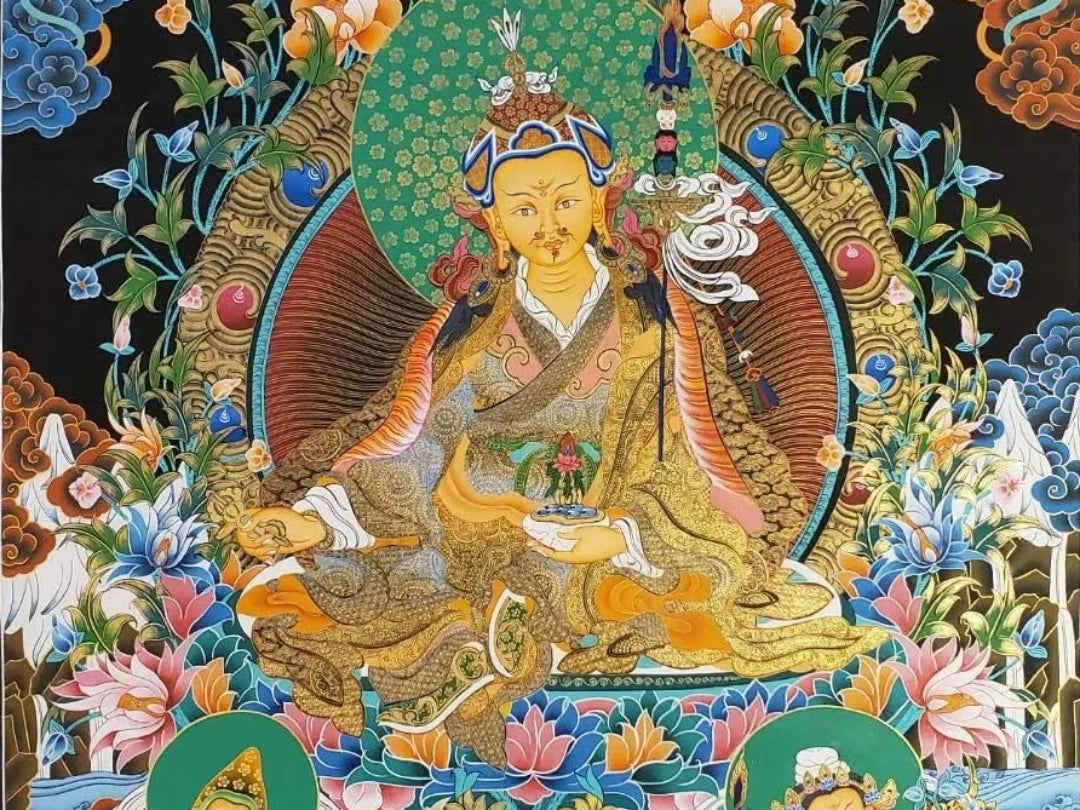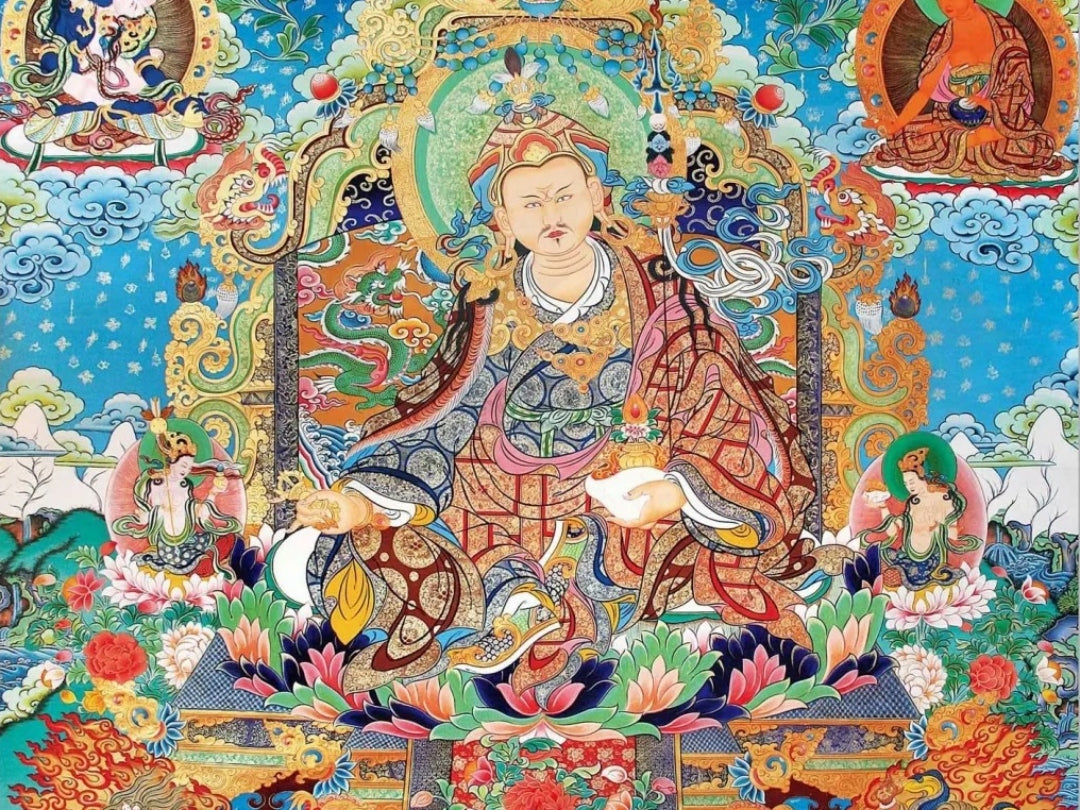Tibetan Buddhism, one of Buddhism’s rich and diverse branches, holds a profound history rooted in the Tibetan Plateau and has grown into a major spiritual path followed by millions worldwide. Known for its unique traditions, teachings, and symbolism, Tibetan Buddhism traces its origins back to the 7th century and continues to flourish in both its homeland and around the globe. In this article, we will explore the origin, key figures, beliefs, and global influence of Tibetan Buddhism, shedding light on this treasured cultural and religious heritage.
Origins of Tibetan Buddhism
Tibetan Buddhism’s roots date back to the mid-7th century, in a period when Tibet was a land of tribes and local rulers. The turning point in Tibetan Buddhist history was the arrival of Buddhism during the rule of King Songtsen Gampo (605–650 CE), who married two influential Buddhist princesses: Princess Wencheng (文成公主) from the Tang Dynasty of China and Princess Bhrikuti from Nepal. Their arrival introduced the teachings of Chinese and Indian Buddhism to Tibet, setting the foundation for Tibetan Buddhism’s spread. With their influence, King Songtsen Gampo embraced Buddhism and even sent ministers to India to deepen their understanding of Buddhist texts. This historical event marked the formal beginning of Buddhism in Tibet and paved the way for its acceptance as the kingdom's official religion.

King Songtsen Gampo and the Mythical Relics
In Tibetan legend, the period of King Songtsen Gampo’s reign saw the arrival of sacred objects from the heavens, including a golden stupa (a Buddhist shrine), the Hundred Bowing Repentances Sutra (《百拜忏悔经》), and the Treasure Chest Sutra (《宝箧经》). These relics were seen as divine revelations, symbolizing the initial spark that ignited Tibetan Buddhism’s growth.
Key Figures in Tibetan Buddhism’s Development
Following Songtsen Gampo, King Trisong Detsen (742–797 CE) emerged as a significant promoter of Buddhism in Tibet. His reign marked a period of remarkable expansion, as he invited prominent Indian monks, including Śāntarakṣita and Padmasambhava (also known as Guru Rinpoche), to Tibet. They established the first Tibetan monastery, Samye Monastery, which became a crucial site for the dissemination of Buddhist teachings.
King Trisong Detsen also made substantial contributions by supporting extensive translation efforts, leading to the creation of foundational Buddhist texts in the Tibetan language. These translated texts established the doctrinal basis for Tibetan Buddhism and enhanced its accessibility to the Tibetan people. During this period, the "Three Jewels" of Buddhism—Buddha, Dharma (teachings), and Sangha (monastic community)—were firmly established in Tibet.

King Ralpacan and the Union of Religion and State
Another prominent figure, King Ralpacan (c. 806–836 CE), also known as Tritsuk Detsen, continued the mission of integrating Buddhism into Tibetan life. His legacy included enacting laws that required every seven households to sponsor one monk, ensuring the financial stability of monastic communities. He also unified Tibetan Buddhist vocabulary and established translation guidelines, known as the "Three Translation Principles," which standardized the translation of Sanskrit texts into Tibetan.
With the combined influence of Songtsen Gampo, Trisong Detsen, and Ralpacan, Tibetan Buddhism flourished, and these three kings are often revered together as the "Three Great Dharma Kings" for their contributions.

Unique Teachings of Tibetan Buddhism
Tibetan Buddhism is characterized by a balance between theoretical knowledge and practical application, known as the path of view and practice. This concept encourages practitioners to grasp the philosophical foundations of Buddhist teachings and actively apply them in their lives. A distinguishing feature of Tibetan Buddhism is its integration of indigenous Bön elements, an ancient Tibetan faith that emphasizes nature and spirit worship. By incorporating elements of Bön, Tibetan Buddhism formed a distinctive religious environment resonating deeply within Tibetan culture.
The Significance of Buddhist Jewelry
Buddhist jewelry plays a crucial role in Tibetan culture, symbolizing spiritual beliefs and serving as reminders of the teachings of Buddhism. Crafted with intention, these pieces often incorporate elements like thangka ornaments, which reflect Buddhist art and philosophy. Each piece is not just an accessory but a meaningful artifact that connects the wearer to their spiritual journey. Understanding how Buddhist jewelry is crafted and its significance can deepen appreciation for these beautiful expressions of faith.

The Transmission of Tibetan Buddhism: Master-Disciple Lineage and the Tulku System
One of the most defining aspects of Tibetan Buddhism is its approach to transmission. Two prominent transmission methods include the master-disciple lineage and the Tulku (reincarnated lama) system. In the master-disciple lineage, monastic teachers pass down teachings to their students through years of rigorous study, preserving the authenticity of Buddhist teachings.

The Tulku system, another unique feature, is a form of reincarnated lineage. It is believed that advanced spiritual masters reincarnate to continue their work, ensuring continuity in teachings and leadership within the monastic community. This system plays a central role in maintaining the presence and influence of Tibetan Buddhism over generations. Additionally, Tibetan Buddhism includes family lineages, such as the Sakya School, which is maintained within the Khön family and passes down Buddhist teachings across generations.

Educational Structure and Monasteries
The monastic education system within Tibetan Buddhism is comprehensive and structured, often divided into lecture and practice centers where students study core texts and doctrines in stages. In the Gelug School, for example, students progress through topics such as the Perfection of Wisdom (Prajnaparamita), Middle Way (Madhyamaka), and Compendium of Abhidharma (Abhidharma Kosha). Upon completing their studies, monks can pursue further spiritual practice or engage in teaching and community service.
Tibetan Buddhist monasteries, varying from small hermitages to large complex institutions, serve as central places for religious study, communal activities, and spiritual guidance. These monasteries often include assembly halls, temples, printing houses, monastic quarters, storage areas, and debate courtyards. They are vital hubs for preserving Tibetan culture, spiritual teachings, and social services.
Tibetan Buddhism’s Global Influence
Tibetan Buddhism’s impact reaches beyond Tibet, thriving in countries like India, Nepal, Bhutan, and Mongolia, and even attracting followers in the Western world. These regions host significant Tibetan Buddhist communities and monastic networks, allowing the teachings to flourish and influence local cultures. In recent years, Tibetan Buddhism has garnered attention from Western scholars and practitioners, leading to a broader exploration of Buddhist teachings and philosophies globally.
Tibetan Buddhism is a deeply symbolic and influential branch of Buddhism, embodying centuries of Tibetan cultural and spiritual heritage. From its origins in the 7th century to its development through the influence of great kings and teachers, Tibetan Buddhism has grown into a distinctive spiritual tradition. With unique doctrines, transmission systems, and an educational structure rooted in Tibetan monastic life, this religion serves as both a religious path and a cultural emblem. As it spreads globally, Tibetan Buddhism continues to inspire people, offering teachings that foster peace, resilience, and compassion.



